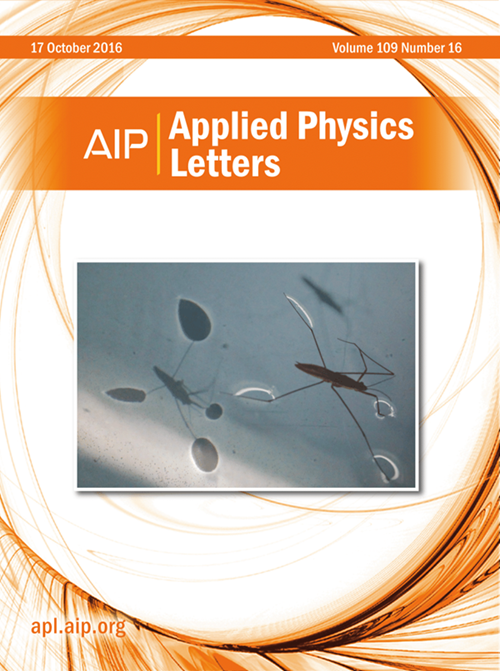Interfacial photonic-electronic synergy in dielectric nanocomposite transport layers for high-efficiency perovskite photovoltaics
IF 3.5
2区 物理与天体物理
Q2 PHYSICS, APPLIED
引用次数: 0
Abstract
Planar perovskite solar cells face a fundamental compromise between optical management and electronic optimization in conventional electron transport layers (ETLs). Here, we propose an approach through dielectric engineering by embedding high dielectric constant (εr = 8.5) ZnO nanoparticles within SnO2 ETLs to create a bifunctional nanocomposite that simultaneously harnesses Mie resonance-enhanced light trapping and work function-tuned charge extraction. Finite-difference time-domain simulations reveal near-field intensity amplification at the ETL/perovskite interface. Ultraviolet photoelectron spectroscopy confirms a 0.31 eV reduction in the conduction band minimum. These findings synergistically boost photon harvesting and carrier injection. The optimized CH3NH3PbI3 devices achieve a power conversion efficiency of 21.1%, representing a 9.9% relative efficiency gain over SnO2-based controls (19.2%). This dielectric nanocomposite strategy establishes a viable framework for decoupling photonic and electronic optimization in solution-processed perovskite photovoltaics devices.高效钙钛矿光伏电池中介电纳米复合传输层的界面光电子协同作用
平面钙钛矿太阳能电池在传统的电子传输层(ETLs)中面临着光学管理和电子优化之间的基本妥协。本文提出了一种介电工程方法,即在SnO2 etl中嵌入高介电常数(εr = 8.5) ZnO纳米颗粒,以创建双功能纳米复合材料,同时利用Mie共振增强的光捕获和功函数调谐的电荷提取。时域有限差分模拟揭示了ETL/钙钛矿界面的近场强度放大。紫外光电子能谱证实,导带最小值降低了0.31 eV。这些发现协同促进了光子收集和载流子注入。优化后的CH3NH3PbI3器件的功率转换效率为21.1%,比基于sno2的控制(19.2%)的相对效率提高了9.9%。这种介电纳米复合策略为溶液处理钙钛矿光伏器件的光子和电子解耦优化建立了一个可行的框架。
本文章由计算机程序翻译,如有差异,请以英文原文为准。
求助全文
约1分钟内获得全文
求助全文
来源期刊

Applied Physics Letters
物理-物理:应用
CiteScore
6.40
自引率
10.00%
发文量
1821
审稿时长
1.6 months
期刊介绍:
Applied Physics Letters (APL) features concise, up-to-date reports on significant new findings in applied physics. Emphasizing rapid dissemination of key data and new physical insights, APL offers prompt publication of new experimental and theoretical papers reporting applications of physics phenomena to all branches of science, engineering, and modern technology.
In addition to regular articles, the journal also publishes invited Fast Track, Perspectives, and in-depth Editorials which report on cutting-edge areas in applied physics.
APL Perspectives are forward-looking invited letters which highlight recent developments or discoveries. Emphasis is placed on very recent developments, potentially disruptive technologies, open questions and possible solutions. They also include a mini-roadmap detailing where the community should direct efforts in order for the phenomena to be viable for application and the challenges associated with meeting that performance threshold. Perspectives are characterized by personal viewpoints and opinions of recognized experts in the field.
Fast Track articles are invited original research articles that report results that are particularly novel and important or provide a significant advancement in an emerging field. Because of the urgency and scientific importance of the work, the peer review process is accelerated. If, during the review process, it becomes apparent that the paper does not meet the Fast Track criterion, it is returned to a normal track.
 求助内容:
求助内容: 应助结果提醒方式:
应助结果提醒方式:


